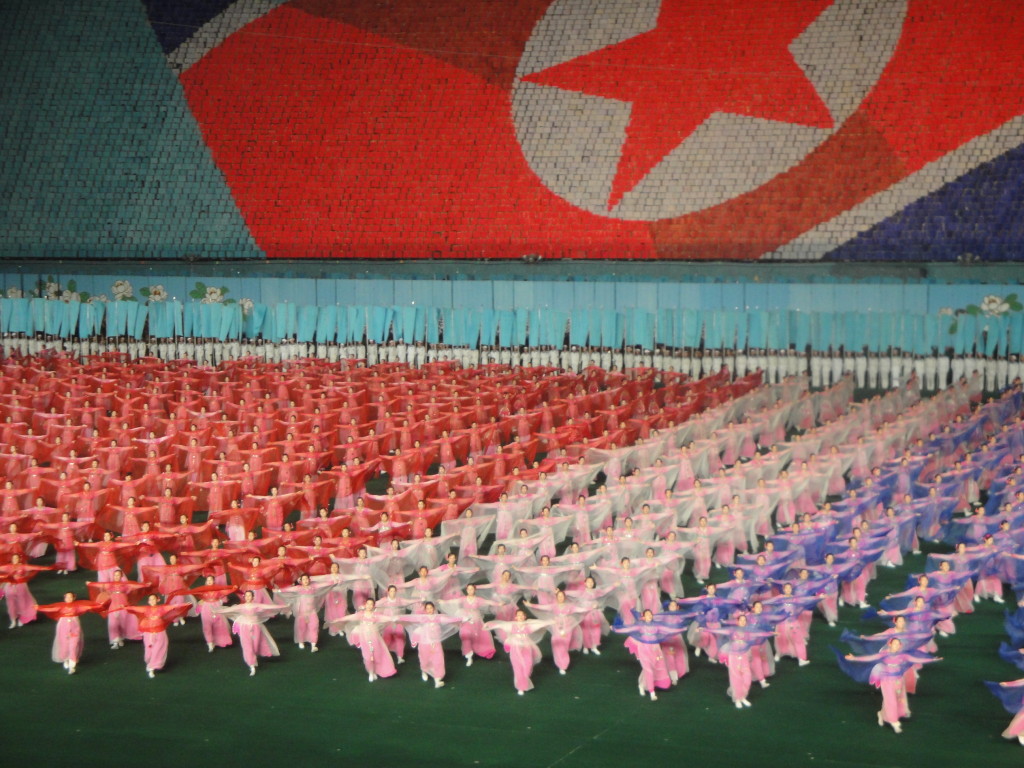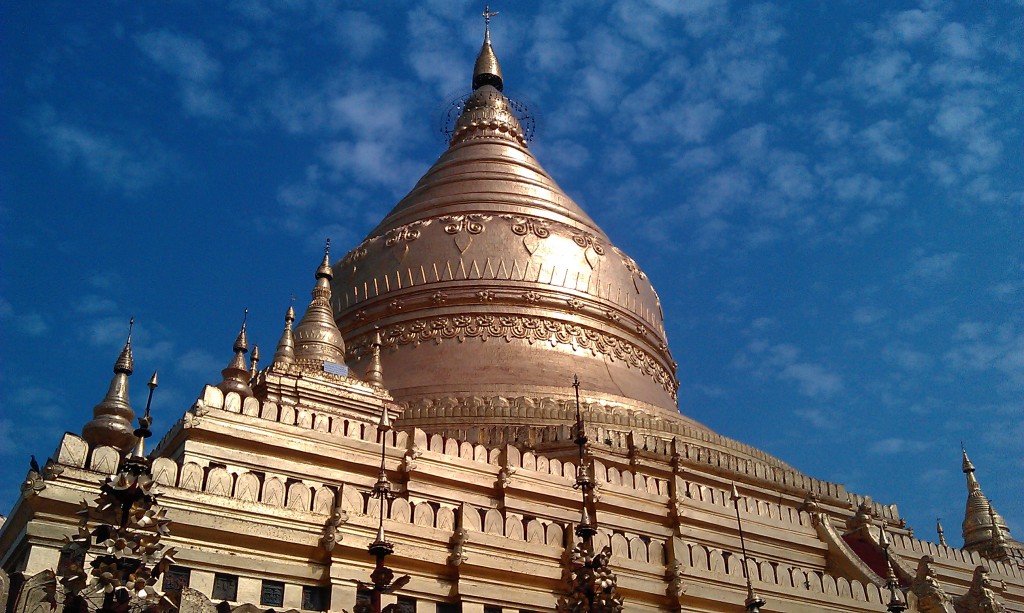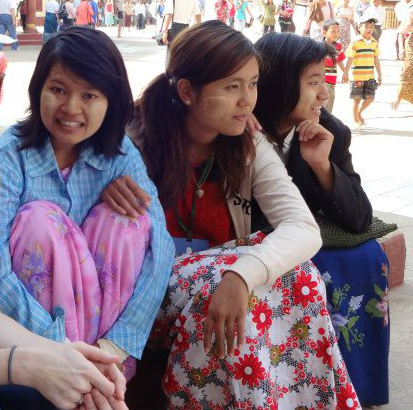Published on July 1, 2013 in the Singapore American Newspaper:
“You will leave with more questions than answers,” the representative from Koryo Tours said brightly. We were in a café in the Beijing airport, one of only four airports that will fly you into Pyongyang, and we were all listening closely as she instructed us on what not to do after arriving in North Korea.
“Do not insult or criticize the Kims, even as a joke. North Koreans are genuinely very proud of their country and they revere their leaders. Ask before you take any pictures. It’s up to your Korean tour guides how much you’re allowed to see and if you’re sneaking photos you’re not supposed to, they can easily restrict where you go. Plus, you might get them into real trouble if you break the rules. The better behaved you are, the more they’ll trust you and the more you’ll be allowed to do. No wandering off on your own or leaving the hotel unsupervised. Though I doubt that will be much of a problem… The Yanggakdo Hotel is on an island in the middle of the Daedong River.”
Almost every tour in the Democratic People’s Republic of Korea (DPRK) is coordinated by the government-run Korean International Travel Company and it was their guides who met us at Pyongyang’s barebones airport to escort us to this infamous hotel. It is one of the city’s most well-known and these days it is regularly packed with Chinese and Western visitors, including a smattering of Americans. The DPRK began allowing American passport holders to obtain tourist visas in 2010 and since then, the country has become an intriguing destination for adventurers longing to escape the beaten path. However, Americans are still a minority among tourists and as North Koreans are regularly coached in the evildoings of the “U.S. imperialist aggressors,” Americans more than other visitors tend to be peppered with questions by their guides.
Nowhere is this anti-Americanism more apparent than in the rusting hull of the USS Pueblo, which is an American technical research ship captured in 1968 and currently docked in the Pyongyang Harbor as a floating museum. Visitors are treated to a brief film that summarizes the 11-month foreign policy debacle that followed the vessel’s capture and proudly concludes that after President Johnson begrudgingly issued a letter of apology, “the world unanimously agreed that the reign of the U.S. Imperialists had been shattered.” As I clambered off the ship, I wracked my brain, trying to remember if I had learned anything at all about the USS Pueblo incident in school. As far as I could tell, the issue had been mostly forgotten about. Despite the regular teaching of American and Japanese atrocities, as we were led around the sparse city our group was frequently hailed by uniformed children calling out cheerful greetings in English. Thanks to its mandatory, free education the DPRK has one of the highest literacy rates in the world.

Arirang Mass Games
Not only are all citizens taught basic English in school, adults are highly encouraged to continue their education at Pyongyang’s central library, the Grand People’s Study House. We peeked in on a class and saw one of the only computers we would see in the country (running Windows 97) with an example sentence on the monitor that read: “How much do these weapons cost?” These undertones of discontinuity are what make Pyongyang a captivating and slightly unnerving travel destination. Just when you start to think you understand the city or presume that it’s not so different from other major cities after all, you find nothing is as it seems. You realize there isn’t a single advertisement anywhere. Or you notice that what appeared to be a stone wall is actually solid cement with a stone motif painted on by hand. Or you grasp that a capital city of this size should have a far larger population bustling about. All of this adds up to give Pyongyang the atmosphere of a movie set, especially since much of what you are allowed to see has been carefully prepared or vetted in advance.
As in all stores, factories, concert halls, subway cars, and so forth, in the classroom at the Grand People’s Study House a pair of portraits kept watch over us all. Kim Il-Sung and Kim Jong-Il are omnipresent. Every monument depicts one or both of them. Every war memorial makes reference to them. Every museum is either about their lives or named after them. Their faces look out at you from pins on the chest of every adult you see. Orchestral musicians at the crescendo of a performance in the Moranbong Theatre cry out an accolade to the Kims. Colossal mosaics illustrating their deeds stand tall, colorful, and clean amidst Pyongyang’s shabby apartment buildings. But undoubtedly the most spectacular tribute to the Kim dynasty is the Arirang Mass Games.
Held in the world’s largest stadium, it is described on the Koryo Tours website as “a synchronized socialist-realist spectacular, featuring over 100,000 participants in a 90 minute display of gymnastics, dance, acrobatics, and dramatic performance, accompanied by music and other effects, all wrapped in a highly politicized package.” It’s breathtaking to experience the live performance, the immensity of which videos fail to capture. 20,000 schoolchildren fill the half of the stadium opposite the audience and use colored squares to create a fluid series of background images. Meanwhile, in the foreground, endless waves of singing women, flying ribbons, marching men, multi-colored banners, children on unicycles, and at one point giant pig puppets pantomime historical events, such as how the DPRK’s military triumphed over the U.S. and South Korea in the ‘Fatherland Liberation War’ and of how Kim Jong-Il singlehandedly modernized the agricultural industry. It is a glorious, hour and a half long homage to an almost completely false history.
The Mass Games—like the rest of Pyongyang’s proud displays—reveal not only how accepted this alternate Kim-centered view of the past is but also how fastidiously celebrated and respected it is. As a tourist, there is very little you can say to alter their views. After all, would you believe a foreigner who told you that everything you learned all your life about your country’s history from your parents and schoolteachers is completely wrong? The only thing you can do is politely observe and genuinely marvel at the show. You will leave with more questions than answers.


